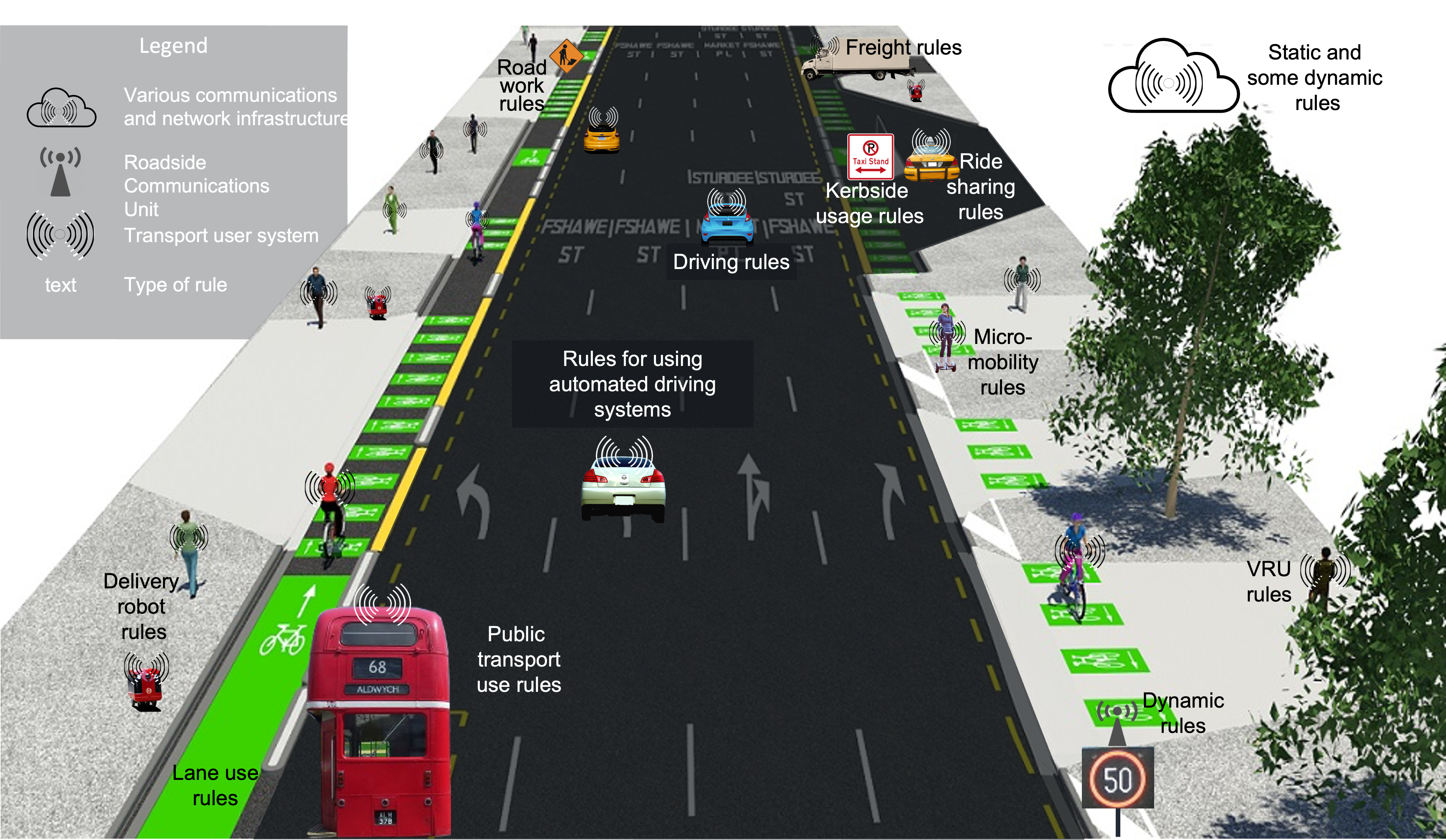
METR Vision
A 13-page PDF document describing METR
Open
Adding trustworthiness
While many previous efforts have focused on information delivery, METR focuses more on the pipeline to ensure that it can deliver rules of the road in a trustworthy manner. For example, while off-the-shelf navigation systems frequently will display a speed limit to the driver, the information displayed is only informative; the driver is still responsible for complying to the posted speed limit, even if the navigation system is inaccurate. Automated Driving Systems require more trustworthy information to complete their tasks.
While the title of the standards series is "Management of Electronic Transport Regulations (METR)", the intent is that it will be capable of providing trustworthy advisories and guidance in addition to regulations. This website defines the term "rule" to represent the aggregation of these three terms.
Within its scope, METR will support both static rules, which can typically be accessed well in advance of the location, and dynamic rules, which field personnel or equipment might change an instant before reaching a particular location.

METR should be able to support virtually any rule that needs to be conveyed to virtually any transport user. For example, the graphic depicts rules for freight vehicles, ride sharing, kerbside usage, micromobility operations, vulnerable road users (VRUs), public transport usage, lane usage, and road works. This information and more needs to be conveyed to all transport user systems; sample user systems shown in the graphic include nomadic devices, sidewalk delivery robots, driver support systems, and ADS-equipped vehicles.

A 13-page PDF document describing METR
Open
A 36-slide presentation describing METR
Open